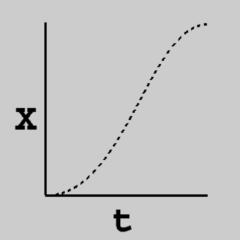Interpolation is used when we have some variable that we want to go from an initial value to an ending value in a certain amount of time.

Our variables are:
(Assume that t is in the range 0 <= t <= duration.)
t / duration will be a fraction between 0 and 1, indicating how far along we are in the interpolation.
Then, using a linear interpolation, the current value for X will be:
a = t / duration X = (1 - a) * start + a * end

A slow-in, slow-out interpolation can be done by the this formula:
a = t / duration a2 = -2*a*a*a + 3*a*a X = (1 - a2) * start + a2 * end